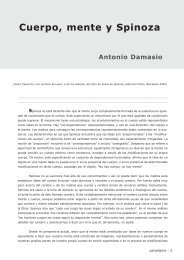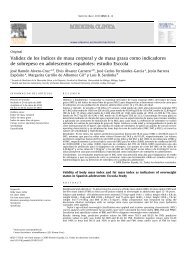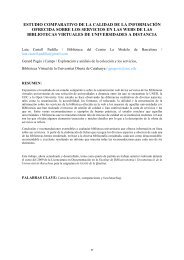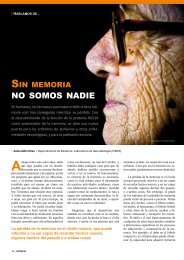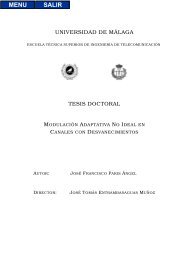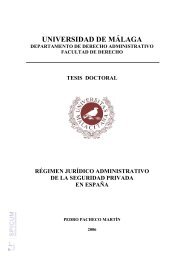Papel de las actividades superóxido dismutasa y catalasa en la ...
Papel de las actividades superóxido dismutasa y catalasa en la ...
Papel de las actividades superóxido dismutasa y catalasa en la ...
Create successful ePaper yourself
Turn your PDF publications into a flip-book with our unique Google optimized e-Paper software.
INTRODUCTION<br />
2.2. VIRULENCE MECHANISMS<br />
Several virul<strong>en</strong>ce mechanisms have be<strong>en</strong> <strong>de</strong>scribed in P. damse<strong>la</strong>e subsp. piscicida<br />
that inclu<strong>de</strong> production of extracellu<strong>la</strong>r products (ECPs) with haemolytic, phospholipase<br />
and cytotoxic activities (Balebona et al., 1992; Magariños et al., 1992; Noya et al., 1995a<br />
and b; Romal<strong>de</strong>, 2002; Bakopoulos et al., 2004). In addition, virul<strong>en</strong>t strains constitutively<br />
synthesize a thin <strong>la</strong>yer of capsu<strong>la</strong>r material that confers resistance to serum killing and<br />
<strong>de</strong>creases macrophage phagocytosis (Magariños et al., 1996b; Arijo et al., 1998; Acosta<br />
et al., 2006).<br />
A close re<strong>la</strong>tionship has be<strong>en</strong> observed betwe<strong>en</strong> capsule production and iron<br />
avai<strong>la</strong>bility. Thus, do Vale et al. (2001) observed that cells grown un<strong>de</strong>r iron-limiting<br />
conditions always have significantly lower amounts of capsu<strong>la</strong>r material. This thinner<br />
capsule probably results in a better exposure of the adhesins and iron receptors at the<br />
bacterial surface during passage through circu<strong>la</strong>tory system. Once the microorganism<br />
reaches the differ<strong>en</strong>t host tissues, the amount of capsu<strong>la</strong>r material probably increases in<br />
response to host cellu<strong>la</strong>r <strong>de</strong>f<strong>en</strong>ce mechanisms such as phagocytosis<br />
3. SUPEROXIDE DISMUTASE AND CATALASE<br />
ACTIVITIES AS VIRULENCE FACTORS<br />
Bacterial inactivation within phagocytes takes p<strong>la</strong>ce by two mechanisms: oxyg<strong>en</strong><br />
in<strong>de</strong>p<strong>en</strong><strong>de</strong>nt mechanisms through phagocyte granule constitu<strong>en</strong>ts (lysosomal <strong>en</strong>zymes,<br />
catepsines, <strong>de</strong>f<strong>en</strong>sines, <strong>la</strong>ctoferrine, proteolytic <strong>en</strong>zymes) and oxyg<strong>en</strong> <strong>de</strong>p<strong>en</strong><strong>de</strong>nt<br />
mechanisms. In the <strong>la</strong>tter mechanisms oxyg<strong>en</strong>ic compounds such as hydrog<strong>en</strong> peroxi<strong>de</strong><br />
(H 2 O 2 ), superoxi<strong>de</strong> anion (O 2·- ) and hydroxyl radical (OH - ) takes p<strong>la</strong>ce. These products<br />
are g<strong>en</strong>erated during the called respiratory burst, due to the activation after phagocytosis<br />
of nicotinami<strong>de</strong>-a<strong>de</strong>nin-dinucleoti<strong>de</strong>-phosphate-hydrog<strong>en</strong> (NADPH) oxidase located in<br />
the membranes.<br />
74




